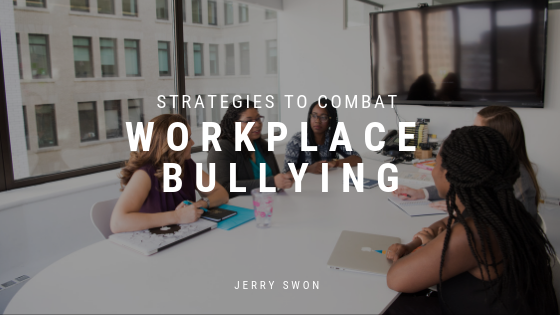Bullying is defined as any offensive behavior whether physical or verbal that is directed repeatedly towards a specific individual. This behavior acts to ostracize the individual from a peer group and involves a real or perceived imbalance of power. Bullying is not only confined to school hallways. Workplace bullying is very real and can be a potential threat to not only productivity but the mental health of employees. The Workplace Bullying Institute found that 60.3 million U.S. workers have encountered bullying in the workplace. Workplace bullying can take the form of:
- Gossiping or rumor spreading
- Excluding someone from the group
- Yelling or using abusive language
- Sabotaging an individual’s equipment or work
- Constantly reprimanding and criticizing a specific person
Some victims of workplace bullying will remain quiet. Fear of ridicule and concern about disrupting the organization are some of the reasons employees suffer in silence. Thankfully, there are strategies that can be implemented to prevent workplace bullying.
Bullying can be subtle or blatant. It is imperative that employees are able to identify different forms of bullying. Organizing workshops to educate staff on what to look for and how to deal with bullying can be beneficial. A more informal and cost-effective approach is communicating the information during staff meetings.
Company policy should incorporate a zero-tolerance for bullying. The policy should clearly define bullying and its consequences. Within the policy, an investigation should be launched whenever an incident is reported and training should be provided to managers to help enforce an anti-bullying environment. Employees should also be encouraged to report bullying as soon as it occurs.
Managers make up 61% of bullies in the workplace. Introspection by those in charge is, therefore an integral step in ensuring that management is not unconsciously bullying their employees.
Employees that have low self-esteem or those who are not as competent tend to be the target of bullying. They are also the employees who will suffer internally and not speak up for themselves. Programs that foster employee empowerment and enhances skills set, can bolster employee esteem and self-confidence.
Educating employees in conflict-resolution is another strategy to build stronger relationships, respect amongst peers and reduce tension.
Bullying can have a severe impact on the well-being of an individual. As an employee, it can affect productivity, office morale and ultimately, profitability. Establishing a zero tolerance approach to bullying and providing employees with the relevant tools and techniques to deal with conflict can go a long way in combatting workplace bullying.

